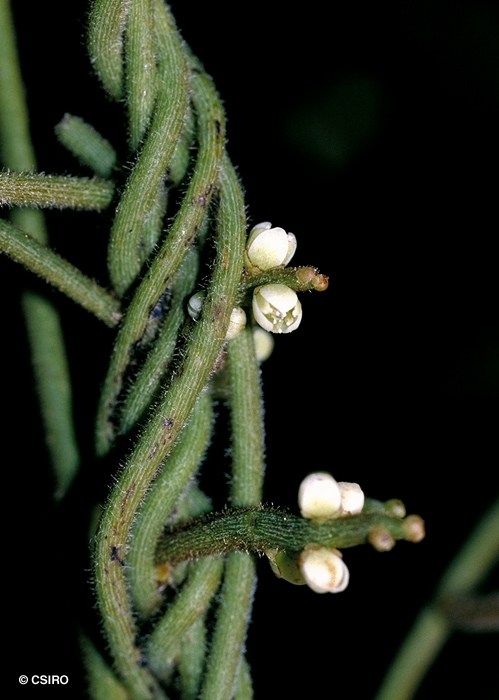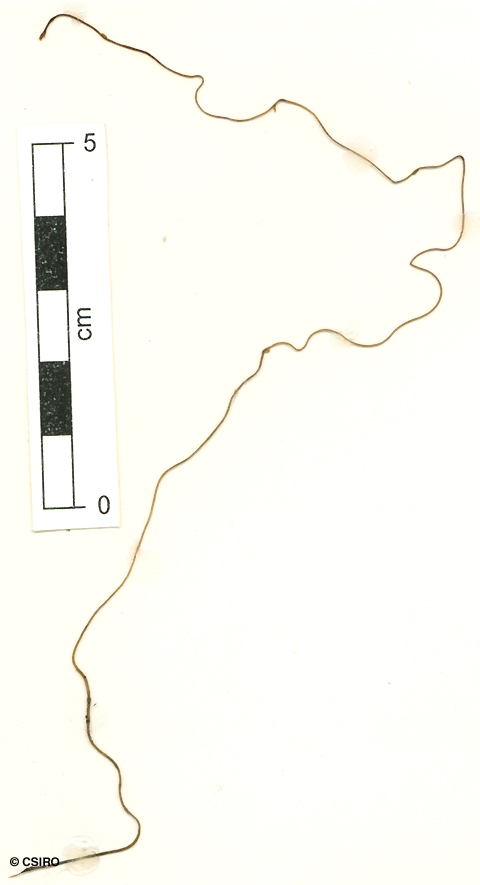Australian Tropical Rainforest Plants - Online edition
Cassytha filiformis L.







Linnaeus, C. von (1753) Species Plantarum 1: 35. Type: India, Illustration Rheede, Hort. Ind. Malabar. 7, t. 44 (1688). Fide J. Z. Weber, J. Adelaide Bot. Gard. 3: 229 (1981).
False Dodder; Love Vine; Vine, Love; Dodder, False; Dodder; Bush Dodder; Devil's Twine; Yugulu; Dodder, Bush; Dodder Laurel
A slender, multistemmed, parasitic vine not exceeding a stem diameter of 2 cm.
Leaves small, scale-like, about 0.5-2 x 0.5-0.75 mm. Young shoots clothed in reddish hairs, older stems +/- glabrous. Twigs produce haustoria which penetrate the tissues of the host plant. Twigs about 0.8-1.1 mm diam., longitudinally striated.
Inflorescence about 2-2.5 cm long. Flowers sessile, about 2.5 mm diam. Tepals arranged in two whorls of three. Outer tepals triangular, each about 1 mm long. Inner tepals about 2 mm long. Stamens in two whorls, the outer whorl of six and the inner whorl of three. Stamens about 1.5 mm long. Anthers about 0.5 mm long. Staminodes three. Two large glands present at the base of each stamen. Ovary green, about 1.5 mm long, ovule one.
Occurs in WA, NT, CYP, NEQ, CEQ and southwards as far as north-eastern New South Wales. Altitudinal range in northern Australia from near sea level to 750 m. Often grows in open forest but also in beach forest, vine thicket, monsoon forest and rain forest. Pantropic being found on all the major continents and most tropical areas.
Food plant for the larval stages of the Small Dusty Blue Butterfly. Common & Waterhouse (1981).
Vine produces cramps; fatal in quantity. Austin, D. F. 1998. Poisonous Plants of Southern Florida.
This species may have medicinal properties.
Probably because of the vigorous hair-like growth, the plant has been used in India and South-East Asia in hair tonics. It contains small quantities of a poisonous alkaloid, large doses of which are fatal. It has a reputation as an abortifacient. Cribb (1981).
Stems produce numerous haustoria which extract nutrients from the host plant and perhaps other stems of the parasite.





